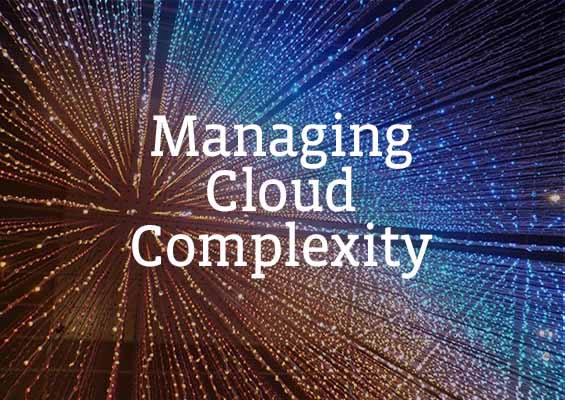
As IT increasingly moves into cloud-based computing, managing information, maintaining security and protecting data integrity all become more challenging. It’s not out of line to talk about a looming cloud complexity crisis as organizations keep increasing their consumption of cloud-based computing and storage resources, creating new data sets and databases, and proliferating virtual infrastructures galore.
As more piles on top of more, IT pros are starting to realize that they face real problems from expanding use of cloud technologies, services, infrastructures and more.
Such issues include the following:
- Ongoing need to monitor, manage and maintain multiple services, data collections and more, where individual resources are integrated only poorly or not at all: Computer management old-timers will recognize this as a case of swivel-chair management – the situation when one person in a swivel chair revolves amidst a sea of screens, one for each console or management utility needed.
- Too many different systems and tools to learn: The problem with lots of consoles or management tools is that each one is different and requires learning and experience to deal with. As the number of such things grows, the learning and experience needs to increase even faster.
- Interactions between systems get more complex and difficult as the number of systems increases: Ultimately, this means IT staff can end up spending too much time trying to figure out where the fires are, as they keep fighting one blaze after another.
Relief from Cloud Complexity: Planning, Sanity and Knowing Your Limits
The first and most important technique to manage complexity is to recognize the issue. Then, make some deliberate plans to recognize, combat and hopefully reduce complexity in your computing environments. In general, it’s smart to understand the IT needs you’re trying to meet by using cloud-based computing and resources before spending too much time, money or effort in trying to put cloud computing to work.
Call it a cloud complexity management plan, if you like. It should address how your organization will deal with cloud complexity in general and include the systems and resources you use, including both local, on-prem and cloud-based ones. It should also specify how systems and resource consumption will be monitored, managed and tracked.
Finally, you’ll want to establish some guidelines to limit or reduce cloud complexity as you grow and evolve your systems. This might mean limiting public cloud computing technologies to only one or two choices, for example.
Selecting the Right Cloud Computing Technologies
Another important aspect of managing and reducing cloud complexity comes from the cloud technology and tools your organization uses. Whatever tools you adopt, they must provide key basic capabilities to help control and limit cloud complexity.
At a minimum, such tools should support the following:
- Cloud configuration management
- DevOps automation
- Consolidated management for hybrid multicloud scenarios (Note: a hybrid cloud involves public and private cloud computing resources, and may also include on-premises systems and resources. A hybrid multicloud involves multiple public cloud computing platforms – such as Amazon Web Services (AWS), Microsoft Azure and Google Cloud all together, for example – as well as private cloud and on-prem components.)
- Cloud services brokers (CSBs) and cloud management platforms (CMPs)
To limit and perhaps even reduce cloud complexity, insist that all third-party consoles or management tools be able to integrate with your chosen, overarching manager of managers (MOM) and system architecture.
Using containers or some other abstraction technology to build so-called micro-services is also a good idea because it helps to avoid vendor lock-in on cloud technology commitments and investments. (A micro-service provides a generic interface to permit consumption of data or resources and acts to abstract runtime environments from vendor-specific entanglements or dependencies.)
Tackling Cloud Computing Building Blocks with Change Management
Another key task in managing complexity is to put formal change management processes in place to keep track of where data and services are coming from and how they’re being consumed. That means making an inventory of cloud computing and traditional IT resources and services and graphing their relationships with data that those resources and services touch.
You’ll want to document the process of adding a new cloud computing resource or service that maintains such metadata. Ditto for removing resources or services when they’re put to pasture.
Your cloud computing process should include the following:
- Explain how a resource or service gets added, removed or changed
- Designate a workflow for enacting the process, along with designating parties responsible, accountable and those who need to be kept informed
- Outline which tools to use, how to use them and how to document changes, additions and deletions
Given such an approach, organizations can rein in their use of cloud computing technologies. Otherwise, they may wind up with their feet in the clouds and their head in the ground, as they attempt to untangle and manage a real mess.
CompTIA Cloud+ validates the skills needed to manage cloud computing technology. Download the exam objectives to see what topics it covers.

